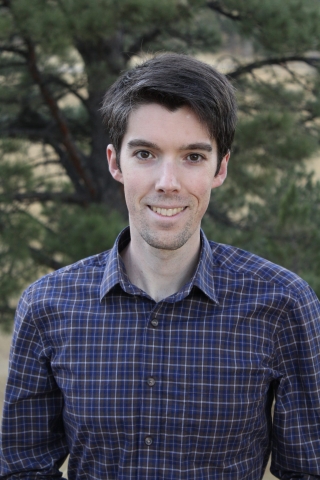Disasters may come with some warning, but often not. That’s why Daniel Swain, PhD, keeps his schedule flexible. Swain is a science communicator who worked nonstop giving interviews and posting online during the recent widespread and disastrous fires in the Los Angeles area.
Swain appeared on CNN to explain the science behind how the mix of dry vegetation, canyons that were “like blowtorches” during the Santa Ana winds, and the closely built residences combined to produce unmanageable fires. When well-known astrophysicist and ARCS Scholar Alum Neil deGrasse Tyson wanted to understand the science of the disaster, his team called Swain to do a podcast episode specific to the fires.
“Complex events, disasters in particular, never have a singular cause,” Swain says. “Did climate change cause the LA fires? The answer is no because no one thing did; it was a confluence of factors. Was climate change a piece of the puzzle? Yes, I think there’s empirical evidence that it did play a significant role.”
Swain was a climate scientist and researcher for the University of California Agriculture and Natural Resources as well as the UCLA Institute of the Environment and Sustainability and the NSF National Center for Atmospheric Research. An ARCS Alum, he received his undergrad degree in atmospheric science at UC Davis and his PhD in Earth System Science from Stanford. He started the Weather West blog around 20 years ago and admits some people know him as “Weather West” rather than by his actual name.
Swain says that 99.9% of the time his inbox is completely filled with requests for interviews or information. He gives his time and juggles schedules because he wants to share correct information and to reach the people “who ask discerning questions about the world and how it could be better.” He’s aware that not all sources of information are equally trustworthy.
As a trained meteorologist and a researcher with access to satellite imagery and weather radar, Swain’s hope is that providing accurate information will help offset false information and allow discussion about future decisions. “That’s a personal motivator,” he says. “This is where the rubber meets the road in terms of bringing science to action. I have a lot of sources, including publicly available sources.”
You might see Swain speaking on media with a split screen, rebroadcasting live helicopter footage of what is unfolding, and explaining the “kind of fire phenomena, fire behavior that I’m seeing scientifically.”
Besides describing the science and accurate details of specific events, Swain also engages with the media regarding “surges in public interest or misinformation, as the case may be,” and speaks to new scientific findings or policy.
View Daniel's Youtube Channel here.

